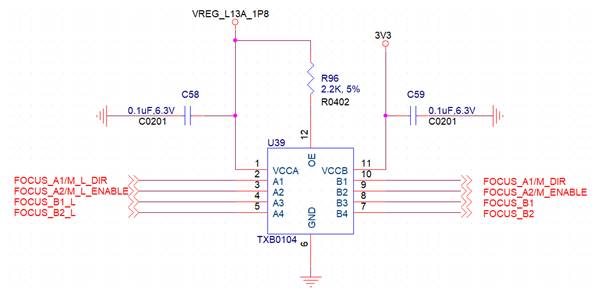Other Parts Discussed in Thread: DRV8834, SN74LV4T125, SN74AXC4T245
Hi Team,
Below is my customer's circuit of TXB0104 for 1.8V to 3.3V signal level shift. A port is connected to MCU(control side) directly without any R, C in series. B port is connected to DRV8834(slave side).
There is only one channel has issue that the output level is only 1.1V in B port when MCU drive 1.8V signal to A port. The output pin is connected to DRV8834's nSLEEP pin that has 500Kohm pull low resistor internally. I ordered TXB0104 samples and do the same test, then I can replicate this issue.
When I tried to connect TXB0104's VCCA and OE pins together and pull up to 1.8V through 2.2K resistor, this issue is solved. One pin in B port with a 500K ohm pull down resistor can output correct signal level, almost at 0V or 3.3V.
My customer will do the same test to check if it works at his real board but he would like to know the root cause. Besides, any side effect if VCCA is connected to 1.8V vis a 2.2K resistor?
Thanks very much.
Vincent Chen


